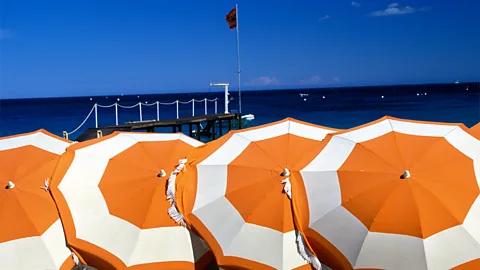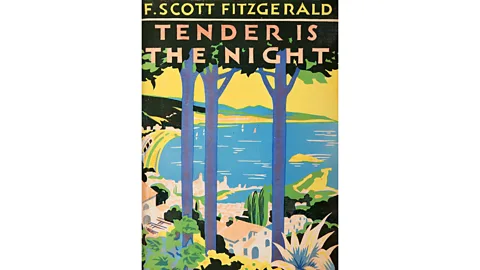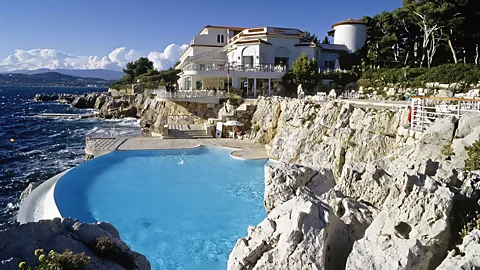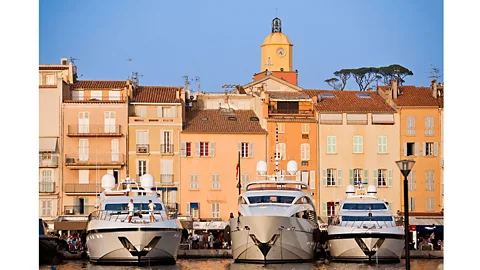The French Riviera: ‘A sunny place for shady people’

Writers like Fitzgerald, Nabokov and Wharton have all perfectly captured the beauty and corruption of the French Riviera. Jane Ciabattari explores its appeal.
The French Riviera, that dazzling Mediterranean coastline from St Tropez to the Italian border, has drawn many writers over the centuries, beginning with the Italian poets Dante and Petrarch. Somerset Maugham, who knew the Riviera intimately, called it “a sunny place for shady people.”
The chiaroscuro of the Côte d'Azur can be seen in the work of many authors who have enjoyed its sensuous pleasures and healthy sea air, including Robert Louis Stevenson, Anton Chekhov and Katherine Mansfield. Vladimir Nabokov gathered impressions for Lolita in Menton in 1937. “There was my Riviera love peering over at me over dark glasses,” Humbert Humbert muses upon meeting the nymphet. Graham Greene, who moved to Antibes in 1966, wrote a dozen books there, as well as a curious 1982 document, J'Accuse: The Dark Side of Nice, denouncing official corruption. But only a few writers have immortalised the region’s unique combination of radiance and shadow.
What is it about the actual place – and the novels set there – that gives us a sense of light and dark, of corruption and tragedy? In part, it’s the rarefied atmosphere –the sunny beach days that give way to an ever-spinning carousel of partying, cocktails and gambling. That’s the impression given by F Scott Fitzgerald, who captured the glory days and darker nights of the 1920s jazz age on the Riviera in his lyrical and tragic 1934 novel, Tender Is the Night. The narrative transports an expatriate American couple – Dr Dick Diver, a psychiatrist, and Nicole, his glamorous and unstable wife and patient – to Antibes, where a young starlet, Rosemary Hoyt, comes into their orbit.

Fitzgerald tracks the evolving love triangle over a period of years, beginning in 1925. His portrait of the Riviera as backdrop to a glittering international party with the Divers as hosts is gloriously written. Fitzgerald sets the scene by describing a “large, proud rose-colored hotel” with a dazzling beach: “In the early morning the distant image of Cannes, the pink and cream of early fortifications, and the purple Alp that bounded Italy, were cast across the water and lay quavering in the ripples and rings sent up by sea-plants through the clear shallows.”
Fitzgerald began the novel in 1925, when he and his gifted and troubled wife Zelda were soaking up the sun along the Cap d’Antibes, drawn there when Sara and Gerald Murphy inaugurated the Riviera’s summer season. (It had been a fashionable winter retreat for Russian and European aristocrats for several centuries.) The Murphys started visiting the Riviera regularly in the summer of 1923, according to Amanda Vaill, whose book Everybody Was So Young chronicles their love story and friendships with the writers and artists in their circle. The owner of the Hôtel du Cap in Antibes kept one wing of the hotel open for them. “The Fitzgeralds rented a villa in Valescure in 1924,”says Vaill. Gerald Murphy cleared the Garoupe beach (previously just a rocky, seaweedy place where fishermen left their boats) and made it a kind of playground. By 1925 the Murphys' art deco Villa America was remodeled and they were living in it and more and more people started arriving.” Their visitors, Vaill adds, included the Fitzgeralds, Hemingways and Archibald MacLeishes, Donald Ogden Stewart and the Gilbert Seldeses, Dorothy Parker, Robert Benchley, John Dos Passos, George S Kaufman, Harpo Marx, Rudolph Valentino, and sometimes Pablo Picasso and his wife Olga.

Like the Murphys, the fictional Divers convince a hotel owner to stay open after April, create a fabulously fashionable villa, and embark upon a glittering, seemingly endless international party. Dick Diver, “a fine man in a jockey cap and red striped tights,” regularly rakes stones from the sand. Rosemary asks Nicole, who wears a string of pearls with her bathing suit, “Do you like it here?” “They have to like it,” intrudes a friend. “They invented it.”
The idyll begins to dissolve when Nicole checks into a Geneva clinic run by her husband. Dick deteriorates; his drinking leads to the point where “he’s not received anywhere any more,” his professional life suffers and the marriage is lost. There were parallels in the lives of the Fitzgeralds and the Murphys, who were back in the US by the 1930s, caught in a downward spiral. Zelda was institutionalised. Scott’s alcoholism impeded his work and shortened his life. The Murphys’ two sons died young. Gerald gave up his promising art career to take over the family business. But the dangerously seductive Riviera as portrayed in Fitgerald’s dazzling prose remained as a touchstone of the time.
Notes on a scandal
The mixture of high society and nouveau riche, nobility and arriviste, in Cannes, Nice and Monte Carlo in the 1890s was a fitting backdrop for Edith Wharton, who set a pivotal section in The House of Mirth there. Wharton didn’t write a novel of the Riviera; she conveyed her New York characters and their “little hothouse of traditions and conventions” to the Riviera, and contrasted its natural beauty with their glittering self-regard. Their social games and betrayals were set awhirl amidst the casinos and luxury restaurants.

Wharton’s Lily Bart flees a series of indiscretions in New York by sailing aboard a yacht owned by the Dorsets, a couple with a fraying marriage. Wharton describes Lily’s view from the deck: “Unclouded sunlight enveloped sea and shore in a bath of purest radiancy. The purpling waters drew a sharp white line of foam at the base of the shore; against its irregular eminences, hotels and villas flashed from the greyish verdure of olive and eucalyptus; and the background of bare and finely-pencilled mountains quivered in a pale intensity of light.”
It is an idyllic setting, but treachery lurks, “like the gleam of a knife in the dusk.” Bertha Dorset, who has begun an affair with a young poet, turns the spotlight on Lily, falsely accusing her of infidelity with her husband George. Lily’s former boyfriend, Lawrence Selden, hastens to warn her to leave the yacht so she is not caught in the middle of a marital spat, but she ignores him.
The showdown between Lily and Bertha comes after an elaborate dinner party at a Monte Carlo restaurant hosted by wealthy Americans for a Duchess whose favour they seek. Among the guests is a society columnist who has spread gossip about Lily and George. At the end of the evening, Bertha orders Lily not to return to the yacht. It’s the beginning of the end for Lily, who is ruined by the scandal.
Wharton’s own experience of the south of France was tranquil by contrast. Fourteen years after publishing The House of Mirth, Wharton began wintering in Hyères, in a less frenetic part of the Riviera. She bought the villa she called Sainte-Claire du Château for her summer residence in 1927, and devoted many years to creating its sublime subtropical garden.

On the waterfront
Somerset Maugham lived at Villa La Mauresque in Cap Ferrat for four decades, beginning in 1927 (he was among the 700 at the 1956 wedding of Grace Kelly to Prince Rainier in Monaco). But he wrote mostly of other locales. A key exception was his 1944 novel The Razor’s Edge, which highlights the Riviera’s decadent allure and includes vivid scenes just before and after the stock market crash of October 1929.
Maugham’s focus is, as usual, on the ebb and flow of high society. His autobiographical narrator follows six characters, including Elliott, a nouveau riche snob who settles in Antibes and entertains with magnificence. “The shores of the Mediterranean were littered with royalties,” Maugham writes, “lured by the climate, or in exile, or escaping a scandalous past or unsuitable marriage.” Maugham follows Elliott through the Depression years and into the era when Hollywood “royalty” begins to gather, sharing wicked insights into Elliott’s descent down the social ladder over the years, until he announces on his deathbed, “I will not be buried on the Riviera among a lot of retired colonels and middle-class French people.” Through another character, Sophie, a heavy-drinking young woman drawn to “rough trade” and opium on the waterfront in Nice, Maugham captures the region’s famed temptations of the flesh.
And what of the region today? The once exclusive Riviera is now home to several million people and draws more than 11 million visitors each year. It still provides a picturesque backdrop for the annual Cannes Film Festival. Say the word “Riviera,” and that magical and doomed world Fitzgerald wrought comes immediately to mind. And it’s likely thanks to Fitzgerald, too, that many a literary pilgrim visits the blue coast with its sparkling days, its limpid nights with “fireflies riding on the dark air” and always, that sense of temptation on the wind.
If you would like to comment on this story or anything else you have seen on BBC Culture, head over to our Facebook page or message us on Twitter.
